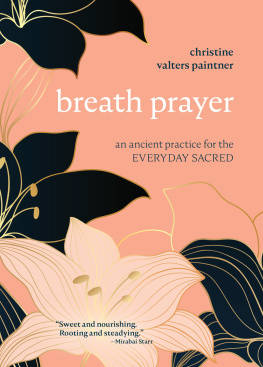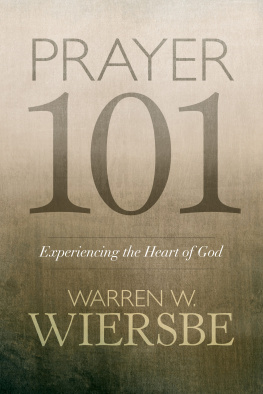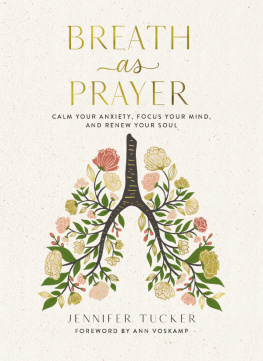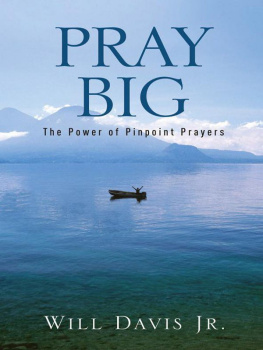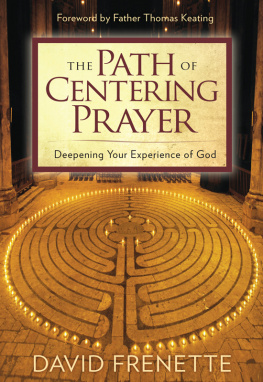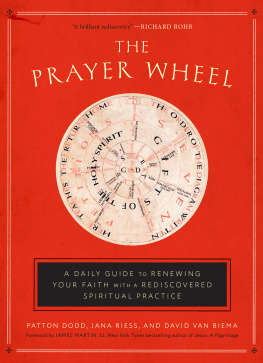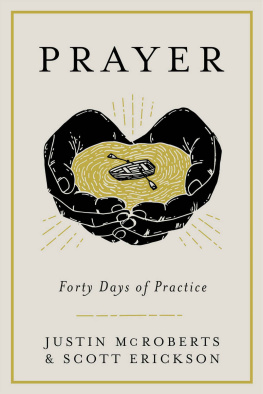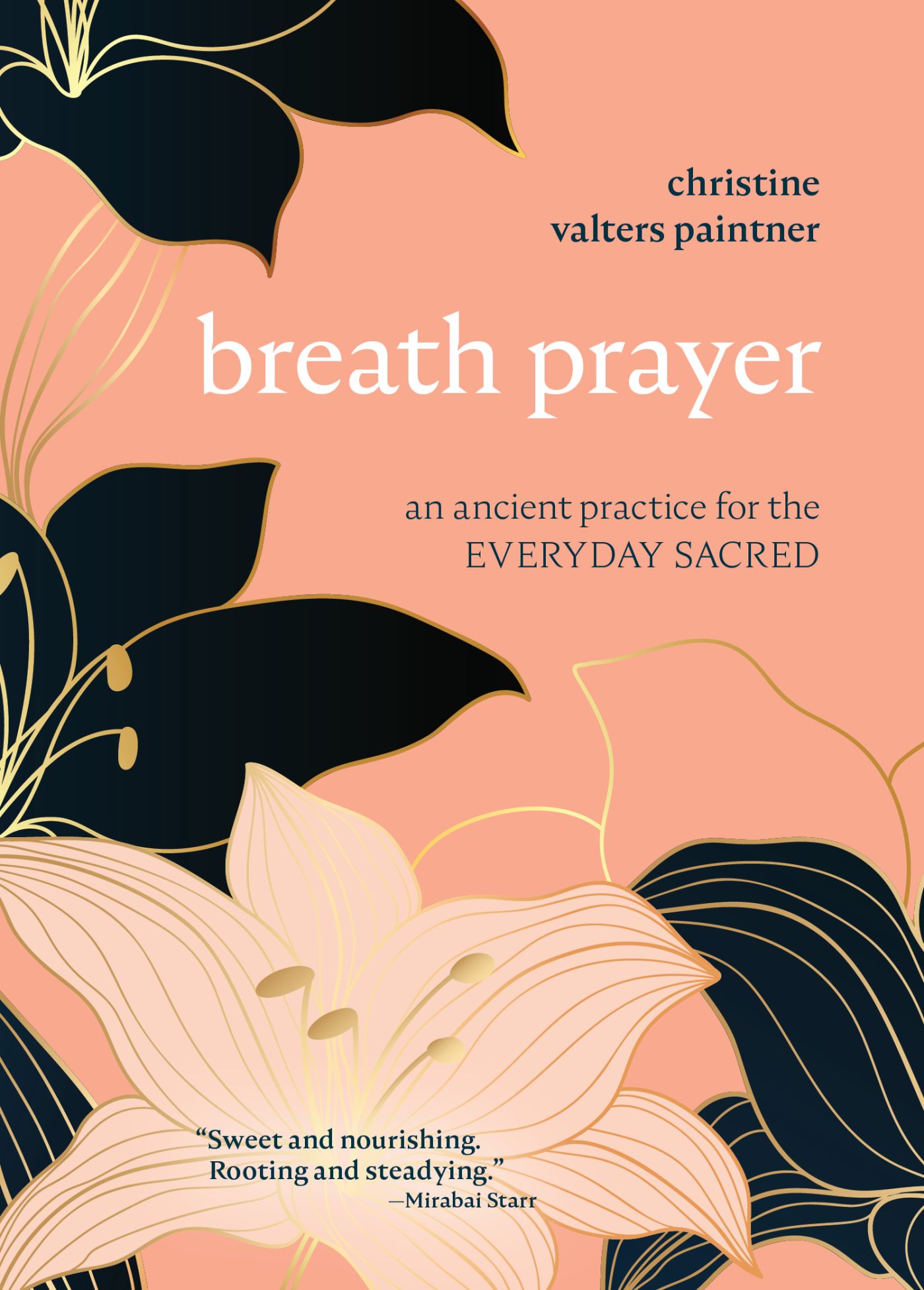to oneself slowly. Patience with small details
makes perfect a large work, like the universe.
for your gradually growing wholeness.
The Divine has sent us a Comforter
in the form of our own breath.
Press out her healing nectar.
What flows so naturally can only be good.
Nothing is gained by listening to the voices of fear
that others have placed in your mind.
Listen instead to the music of Soham
pouring through your flesh.
Inhalation is wine. Exhalation is surrender.
Beauty does not stream down from above.
It murmurs from the well of Silence in your heart.
Silence is the Mother. You are her song.
Alfred K. LaMotte
M any religious traditions have some version of breath prayer. In my own tradition, the roots of breath prayer are built from St. Pauls invitation to people who hold faith to pray without ceasing. In early Christianity, many monks and nuns would endeavor to do exactly this in practice by bringing prayer to each breath. They would combine a phrase of prayer or blessing with the inhale and exhale so that every breath was a chance for them to be present to the sacred. In earliest tradition, the words they used were
Lord Jesus Christ, Son of God (inhale)
have mercy on me a sinner (exhale)
known as the Jesus Prayer or the Prayer of the Heart. This prayer and prayer form originated in the sixth century, but the text is taken from words spoken to Jesus, as recorded in the gospels, in the first century.
This kind of mantra practice has also long been present in the Hindu tradition, where a sacred phrase is repeated as an anchor to keep ones awareness focused on the divine at work in the world. In the Buddhist tradition, these take the form of gathas, short verses recited with the breath, as part of mindfulness practice and meditation, and recited during ordinary activities, like walking, working, or cleaning and so on.
In Sufism it is the dhikr prayer that is repeated to help in remembering the sacred presence. Jews pray the Shema, Hear O Israel: the Lord our God, the Lord is One, recited as part of morning and evening prayers and also before sleeping. Some consider it to be the most important prayer they offer. Some Christians pray with the rosary, which is a prescribed set of prayers to repeat again and again while using beads to mark your way. While some who pray the Shema or the rosary dont always equate the prayer form with breath, for those who observe the way the prayer is embodied, repeated, they witness the breath and cadence so close in form that for many it is considered a form of breath prayer.
Give Me a Word
In ancient times, wise men and women fled out into the desert of what is now the Middle East and Northern Africa. There, they found a place so stripped barren and wild they could be fully present to the divine and to their own inner struggles. To them, the desert became a place to enter into silence, the refiners fire, and be stripped down to ones holy essence. The desert was a threshold place where, they believed, you emerged different from when you entered.
As people heard about the wisdom of those entering the desert, many followed these ammas and abbas, seeking them out, asking them for wisdom and guidance for a meaningful life. One tradition of seekers was to ask the wise ones of the desert for a worda word or phrase on which to ponder for many days, weeks, months, or sometimes a whole lifetime. This practice came to be connected to lectio divina, where we approach a sacred text with the same request: Give me a word. We ask to meet something in the text that will nourish us, challenge us, a word or phrase or line we can wrestle with and grow into. The word that is given has the potential to transform us.
Whatever your spiritual or religious background might be, this book is meant to provide an invitation for us to practice this seeking of a life-giving word to help direct our attention in various moments of the day toward what is most sacred.
To reflect both the desert tradition and also the different religious traditions, I have chosen to begin with the many ordinary practices such as showering, cooking, and driving, and written a short breath prayeror whats sometimes called a poem prayerto accompany it. These are prayers you might learn by heart and recite gently to yourself as you perform the task, as a way of bringing a meditative awareness to all you do. If you are familiar with the practice of centering prayer, it is similar to repeating the word or phrase as an anchor for your attention, but in all the activities of daily life. In also seeking to bring that aspect of a word that might change us, Ive also sought to focus on words or phrases that, combined with breath, might transform us as we engage and breathe them, over days and weeks and even a lifetime.
Breath by Breath
In the Philokalia, the great collection of Eastern Christian wisdom books, which also teaches about the early practice of the Jesus Prayer, St. Hesychios the Priest writes, Let the name of Jesus adhere to your breath, and then you will know the blessings of stillness. I love this image of letting the prayer adhere to your breath. Rather than a forcing together of word and breath, imagine the words naturally being drawn to the breath like a magnet to metal or like bees to flowers. In this bringing together, the blessings of stillness wash over you.
Our breath is such an intimate companion. One that sustains us moment by moment even as we are entirely unaware of that sustaining gift. Yet when we bring our intention to it, it also becomes an ally for slowing down, for touching stillness.
These prayers are meant to be gatewaysboth to bring you more present to the sacredness of whatever activity you are involved in, and also, perhaps, to your own practice of writing short phrases for prayer to learn by heart. Ill offer guidance for your own creation of that paired praying practice at the end of the book.
The intention and focus throughout the book is not on saying each prayer correctly or perfectly each time, but on letting the words open your heart to a deeper intention in daily living. We work on the words, but the words work on us as well. Eventually, you might discover that you are not so much reciting the prayer as the prayer is reciting you, guiding you, opening your heart to a devotion to the world.

